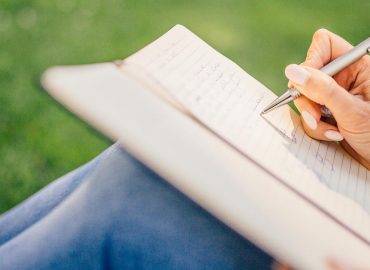Active learning is something which some students (and even parents or teachers) tend to overlook. They find that active learning requires a lot of extra effort. As a result, traditional instructional methods gradually take the place of active learning as it starts to quietly fade into the background. However, a lot more needs to be done to make active learning effective.
From my experience as an educator, I have met many students who were content with just listening to the lesson. This form of passive learning could put them at a disadvantage. Compared to their peers, their learning would be slower and less effective.
It is true that active learning involves putting in that extra bit of energy and commitment. But the positive impact of active learning is worth the effort. Students need to know that there are a lot of ways active learning can help them improve both academically and beyond school.
This approach promotes critical thinking. It also encourages creative problem solving, both individually and as a team. Active learning also places some degree of emphasis on self-evaluation, giving students the opportunity to reflect. It also stimulates and reinforces conceptual understanding, helping students to expand on their skill sets.
Is active learning effective?
Studies have shown that active learning is more effective in helping students understand complex concepts. It helps them to build a strong foundation. Active learners take greater ownership of what they are learning. These students tend to be more proactive in seeking knowledge. Active learning also equips students with skills that are useful in life.
Active learning has received a lot of attention in recent years. It helps students to improve their knowledge and skills by directly involving them in their learning. Active learning happens not only during classroom hours, but also when the student engages in leisure activities. Students who are learning new skills can also use active learning techniques to master these skills.
There are a lot of benefits when students participate actively in class. As a flexible learning technique, active learning can better cater to the student’s learning needs. In this commentary, we will discuss how effective active learning can be in different learning situations.
Active Learning or Passive Learning: Which is more effective?
Active learning gets the students involved in meaningful learning activities. It encourages students to remain engaged in their learning. It also allows the learners to take charge of how they learn. Someone who is trained in active learning learns all the time.
After all, one of the main goals of active learning is to train students to think deeper. In today’s fast-paced classroom, students should not be passively waiting for information to be given to them. Traditional methods such as rote learning and memorisation are simply not enough for today’s academic demands.
Passive learning is another term that can be used to describe the traditional way of learning. In a passive learning environment, the teacher conveys knowledge to the students without giving any feedback to the learners. It is a one-way learning method. Students listen to what their teacher says. They do their homework and assignments, take their own notes and memorise what they are taught. After that, they sit for their examinations.
The student holds a lot more responsibility in absorbing the information presented to them. Students will need lots of focus to do well in a passive learning classroom. However, this can be hard to achieve due to distractions such as after-school activities, tuition, exercising, social media, gatherings, etc. With so much going on every day, there is barely enough time to really focus on any particular thing. Many students these days are not getting enough sleep at night, which affects their ability to focus deeply.
That’s why active learning is more relevant for students today. It is a more effective way for students to learn, especially in a highly-connected world where so many things are happening at the same time. Passive learning could have worked in the past, but it is no longer as effective now.
Do students actually enjoy active learning?
Here’s an interesting fun fact by researchers from Harvard University, in a 2019 study on student’s perspectives on learning methods. Traditional learning was the type of learning that students genuinely preferred. Passive learning received slightly more positive responses than active learning, according to the opinions of the research participants, i.e. students.
Students enjoyed the traditional teaching style more than its active learning counterpart. They wished that their courses were taught in a similar passive way that they were used to. The participants also felt that they could achieve more from traditional lectures than from an active learning environment. They believed that they could learn better when acquiring information from a well-versed professor. But in the end, the study showed that the active learning group outperformed the passive learning group.
From the study, the researchers concluded that students are not always the best judge when deciding on how they learn. Many students are comfortable and content with traditional learning. They would only need to sit down and listen. But they must know that the easy way of learning is not always the best for them.
The researchers also pointed out that students will become more receptive as they get more familiar with active learning. When they start to see the benefits of active learning, their perspectives and thinking may change. Active learning is indeed hard work. It prepares students for challenges, not just for higher-level education but also for adulthood.
Effective Strategies for Active Learning
It is important for us to adopt the most effective strategies when it comes to active learning. As educators, using the appropriate learning techniques can help students to gain a deeper level of understanding. Students also need to be aware of their own active learning style, and what works for them.
In a previous article, we have covered some active learning activities that can engage students. Teachers can also change some of these interactive learning methods to better suit specific learning styles. Some students work well in larger groups of four to five. Other students may prefer individual work or pair work. For example, brainstorming or the three-step interview would work for groups, whereas dual coding can be effective for pairs.
There are many active learning techniques which students can make use of. Active learning generally includes group activities, hands-on sessions and educational games. It can also include challenges that would stretch a person’s thinking.
Here are some of our favourite active learning techniques:
Active Learning Technique 1: Brainstorming
Brainstorming (or group discussion) is one of the earliest active learning strategies. In this activity, the main goal is to generate a wide range of ideas on a certain topic. It encourages students to contribute their ideas based on what they have learnt in the past. Brainstorming helps students to develop logical thinking as they link discrete concepts together. It also broadens their perspectives and changes their mindset for the better.
Active Learning Technique 2: The Three-Step Interview
The three-step interview helps students activate their collaborative and active listening skills. This activity involves sharing one’s thoughts, quizzing one another, and taking notes while others are speaking. During this activity, students are always generating fresh ideas to share them with one another. As a result, students would gain a better connection with the learning material in a creative manner.
The first two active learning strategies focus on effective collaboration and communication of ideas. Students can dive deeper into their ideas when they voice out their thoughts and listen to one another actively. Brainstorming is a freestyle form of communication that does not constrain ideas to a particular structure. The three-step interview is more organised, with a clear assignment of duties for each group member (e.g. interviewer, interviewee, note-taker).
Active Learning Technique 3: Retrieval Practice
In retrieval practice, students recall information by bringing it from the back of their mind into the foreground. Students are actively retrieving facts and applying them to the problem they are facing. They should not look for answers from textbooks, guidebooks and assessment books until the activity is over.
The main purpose of this activity is to recall knowledge, speak them aloud or write them out. Students can then check the accuracy of what they have said or written against their guidebooks or notes.
Active Learning Technique 4: Dual Coding
Dual coding is an excellent way for visual learners to study actively. Examples include infographics, charts, diagrams or even comic strips. In dual coding, the learner creates a visual of the concept which they are learning. This visual does not have to be too accurate or specific. Instead, it serves as a visual cue to help the student recall ideas. Its effectiveness depends on how a student can translate a concept into a visual representation. This learning technique is effective even for students who are not too good at drawing.
Active Learning Technique 5: Reorganising Your Thoughts
This technique is one of the best practices of active learning. Students are encouraged to revisit and reorganise their thoughts from time to time. An active learner would have written their own notes after each lesson. Make it a habit to regularly take out your notes for a review. Could the points be better organised? Sorting out your thoughts can help you to connect ideas together. Your learning becomes more effective as you consolidate the concepts. If you have not done so, rewrite your notes in your own words.
Active learning techniques are only effective if they are used correctly. It is also important for teachers to understand the motivation behind each technique. Students should also be clear of the learning outcomes for each lesson. Using a different active learning technique each day would keep students engaged and excited.
How can students ensure effectiveness in active learning?
Active learning helps students to understand new things, prepare for a test, or even excel at their hobbies. When active learning is used in an effective manner, these activities would become more enjoyable. Active learning infuses fun and meaning into something that might seem boring. It also allows one to stretch their creative mind. Active learning involves activities that will make a person think critically. It allows them to use their skills and pursue their interest.
Students who are preparing for their examinations are encouraged to adopt active learning techniques. These techniques would make their learning more effective, as opposed to passive learning techniques such as memorising and rote learning. While students can still score well at the examinations with passive learning, they would not get very far. After all, learning is more than just passing the examination. Effective learning involves many higher-order skills, such as problem solving and creative thinking.
Active learning is not just limited to the classroom. In fact, active learning can also help students discover their hidden talents. Learning something new often begins with a spark of interest. This spark can eventually turn itself into a passionate hobby. It can be anything that helps a student focus and engage in what they are doing.
When students participate actively in hobbies, they can discover their deeper interests. Hobbies should not be seen as activities which are merely used to pass time. Instead, most hobbies reflect a person’s passion for a particular area of interest. And those who are engaged in what they are doing would naturally apply active learning techniques along the way.
Active learning is effective, but students must play their part
Here’s our take. Active learning is more effective, but do sprinkle in some form of passive learning from time to time. Traditional learning approaches can educate one’s mind. It helps to build a solid foundation and prepares one for greater things. Active learning encourages one to shape and evolve their way of thinking. Active learning develops and strengthens a student’s skills, character and personality.
For active learning to be effective, students have to put in their share of effort. Some students may take a while to get comfortable with active learning. But here’s the good news: once a student becomes familiar with active learning, it would naturally become part of their way of learning. Active learning becomes a subconscious process, helping the student to achieve their goals more effectively.
Related Questions
Is active learning effective for everyone? Active learning is effective for all, regardless of age or educational background. Some people may prefer the traditional way of learning, but active learning techniques are more versatile and can be adapted to individual learning styles. You may need some time before you get comfortable with active learning.
What learning styles are more effective for active learning? Learning style refers to the preferred way a learner gains and understands information. Yet, active learning can adapt to the learning style of the students. An appropriate learning strategy is vital for the learning style of the student.



